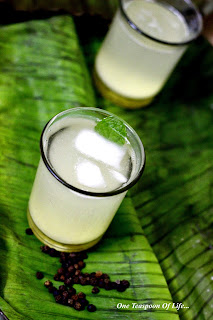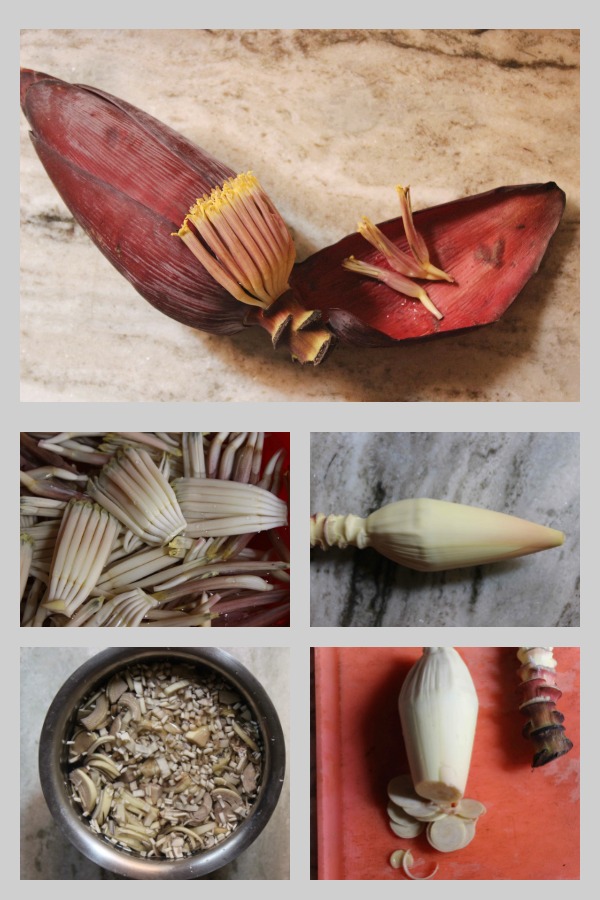During these hot summer months in Bangalore, I catch myself day dreaming about summers in Goa. Summer vacations, back then was our right, now just a dream. Off to play by 9am and back home only by 8.30pm managing to squeeze in a lunch only cause my friend was called in for lunch and I would be alone in the sun. It was bliss! Hot & sweaty, all tanned up, we would play everything from lagori to chor police. When the heat got to us, we would take juice breaks. Rasna was an all time favorite among kids back then. Come summer, and all the moms would make a bottle of Rasna and keep it in the fridge for these breaks of ours. It was in times like these, my best friend N introduced me to a more natural homemade drink - Aam Panna. I loved it so much, that she had to bring me some every summer when her mom made it.
Aam Panna is a raw mango cooler. So easy to make and oh so tasty. These days we catch it staring at us from the pages of restaurant menus, but that bright green concoction tastes nothing like the real thing. Firstly, the real thing isn't even bright green :) The recipe I have below is N's mom's. The extra additions I have made to it are all the optional ingredients. You can make it without all the optional ingredients and it will still taste equally good.
 A sweet and spicy beverage made using raw mangoes
A sweet and spicy beverage made using raw mangoes
Recipe Type: Beverage
Cuisine: Indian / Maharastrian /Goan
Prep Time: 3 Hours (Includes soaking time)
Cook time: 10 minutes
Yield: 4-5 Glasses / 750 ml
Ingredients:
3 or 500 gms Raw Mangoes
500-750 ml Water
8-10 tsp Sugar
1 tsp Pepper powder
A pinch Salt (Optional)
1/4 tsp Black salt / Kala Namak (Optional)
1/2 tsp Cumin powder / Jeera powder (Optional)
Method:
Notes:
1) The above recipe made 750ml of diluted juice for me. If the mangoes are very sour, you can store this as a concentrate and dilute it while serving.
2) The amount of sugar, salt and spices, all depends on the sourness of the mangoes being used. I suggest starting with half the quantity of sugar/salt/spices mentioned above and adding more as required.
3) N suggested this is usually served at room temperature, however I generally serve is slightly cooler.
4) This may not be suitable if you are suffering from throat infections, it may aggravate it. There is a slightly different version you can make if you are suffering from throat troubles, boil the mangoes until then are half cooked and then peel and grate. Follow the rest of the recipe as is. This version apparently does not aggravate throat infections.
5) This stores well in the fridge for 18-20 days. However, I doubt you will ever get the chance to test this :). Mine barely lasted 3.
Aam Panna is a raw mango cooler. So easy to make and oh so tasty. These days we catch it staring at us from the pages of restaurant menus, but that bright green concoction tastes nothing like the real thing. Firstly, the real thing isn't even bright green :) The recipe I have below is N's mom's. The extra additions I have made to it are all the optional ingredients. You can make it without all the optional ingredients and it will still taste equally good.
Aam Panna | Sweet and Spicy Raw Mango Cooler
Recipe Type: Beverage
Cuisine: Indian / Maharastrian /Goan
Prep Time: 3 Hours (Includes soaking time)
Cook time: 10 minutes
Yield: 4-5 Glasses / 750 ml
Ingredients:
3 or 500 gms Raw Mangoes
500-750 ml Water
8-10 tsp Sugar
1 tsp Pepper powder
A pinch Salt (Optional)
1/4 tsp Black salt / Kala Namak (Optional)
1/2 tsp Cumin powder / Jeera powder (Optional)
Method:
- Wash and peel the raw mangoes
- Take 500ml of water in a large container
- Grate the mangoes and add them to the water
- Cover and leave aside for 2-3 hours
- Drain out the water into another container. Squeeze the pulp to remove any more juice available.
- Add sugar, pepper powder, salt, black salt and cumin powder and mix well until sugar dissolves.
- If it is concentrated, add more water and serve it on a hot summer day.
Notes:
1) The above recipe made 750ml of diluted juice for me. If the mangoes are very sour, you can store this as a concentrate and dilute it while serving.
2) The amount of sugar, salt and spices, all depends on the sourness of the mangoes being used. I suggest starting with half the quantity of sugar/salt/spices mentioned above and adding more as required.
3) N suggested this is usually served at room temperature, however I generally serve is slightly cooler.
4) This may not be suitable if you are suffering from throat infections, it may aggravate it. There is a slightly different version you can make if you are suffering from throat troubles, boil the mangoes until then are half cooked and then peel and grate. Follow the rest of the recipe as is. This version apparently does not aggravate throat infections.
5) This stores well in the fridge for 18-20 days. However, I doubt you will ever get the chance to test this :). Mine barely lasted 3.


